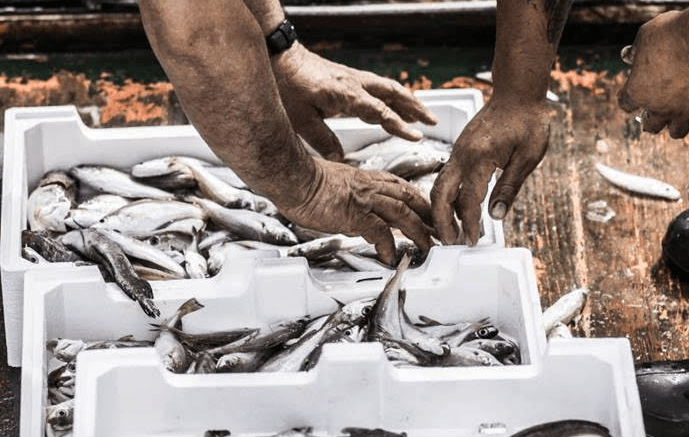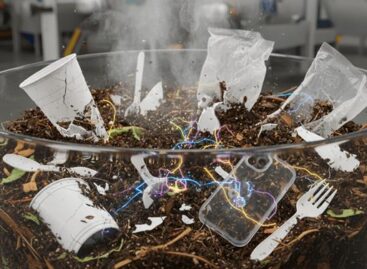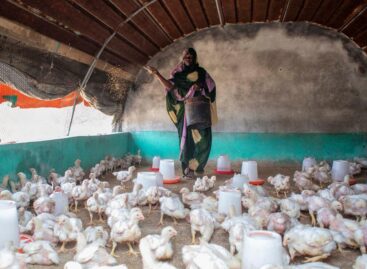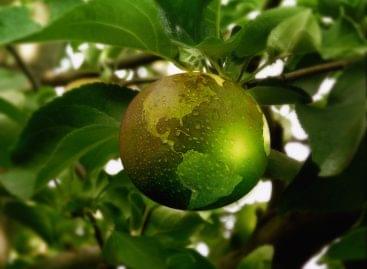The impact of microplastics on food safety: the case of fishery and aquaculture products
Microplastics present in the oceans and inland waters are unintentionally ingested by a large number of aquatic animals of commercial value. These plastic particles are made of compounds such as polymers and additives that vary in their composition depending on the desired final characteristics of the material. These polymers can sorb (either absord or adsorb) and desorb contaminants from the surrounding environment, which could pose a threat to the food safety of fishery and aquaculture products. To determine the impact on human health of the presence of microplastics in these products, an exposure assessment of plastic polymers, additives, and sorbed contaminants in mussels was conducted by the Fisheries and Aquaculture Department of FAO.

Plastic materials are present in nearly all aspects of modern life, from simple food wrappers, clothes containing synthetic fibres and car tyres to life-sustaining medical equipment. Their manufacture, use and discharge has significantly increased causing their accumulation in landfills, oceans and inland waters. In 1950 the global plastic production was 1.7 million metric tons by 2015 this number had grown to 322 million metric tons (Worldwatch Institute, 2015). There are many types of plastic but five dominate global production: polyethylene, polypropylene, polyvinylchloride, polystyrene, and polyethylene terephthalate (GESAMP , 2015). Plastics make their way into the aquatic environment by direct runoff and disintegration of meso and macro plastic debris. Direct release results from untreated sewage, inadequate industrial control, improper human behaviour, and abandoned or lost fishing gear (UNEP, 2017). Most plastics degrade very slowly but when exposed to ultraviolet (UV) light and constant abrasion this process is significantly accelerated.
http://www.fao.org/fileadmin/user_upload/globefish/img/safety_quality/Saara-M%C3%A4kelin.jpgMicroplastics are divided into two main groups. Primary plastics are those intentionally manufactured to be of a particular size; while secondary plastics result from the breakdown of larger materials. Examples of primary microplastics include: pellets, powders, and industrial scrubbers. Additionally, plastics are divided according to their size into nano, micro and meso. The term nanoplastics refers to particles measuring between 1 and 100 nm, microplastics to particles of 0.1 µm (1000 nm) to 5000 µm, and mesoplastics to all materials above 5mm.
Microplastics have been recorded in twelve out of the twenty-five most important species and genera that contribute to global marine fisheries (Lusher, Holmann & Mendoza, 2017). Therefore, they pose an emerging food safety concern because the toxicity of plastic and its components (polymerized monomers, additives and, possibly, adhered contaminants from the oceans) has not been evaluated by relevant international expert scientific committees such as the Joint FAO/WHO Expert Committee on Food Additives (JECFA ). Some plastic monomers are known to be carcinogenic or toxic if ingested; however, during polymerization they become less toxic. Many plastic additives are suspected to be endocrine disrupters, and toxic contaminants sorbed by plastics can be released and bioaccumulate in the environment (Meeker, et al., 2009 & UNEP, 2008). Relevant international expert scientific committees such as JECFA thoroughly evaluate the potential toxicity in light of newly generated scientific data. This complex evaluation process is key for risk analysis exercises (risk assessment, risk management, and risk communication). A preliminary risk assessment has been carried out by characterizing the hazards, exposure assessment and characterizing the risks.
Plastic microparticles mainly accumulate in the gastrointestinal tract of animals. Conveniently, it is a common practice to degut fish before consumption, which minimizes the direct exposure to microplastics. Nevertheless, exceptions include small pelagic fish species, such as sardines, anchovies, a number of small sized freshwater fish that are eaten whole, crustaceans (e.g. shrimps) and echinoderms (e.g. urchins). Bivalves are also of particular concern because the whole animal, including the gastrointestinal tract, is eaten. Within the bivalve group, mussels have been of great research interest. Several publications have reported the occurrence of plastic in fishery and aquaculture products but they are mainly restricted to Europe, North America, Brazil and China. The lowest level of microplastics concentration in mussels (less than 0.5 particle/g) was reported in Europe. In contrast, the highest concentration of microplastics in mussels was observed in China, amounting to 4 particles/g (EFSA, 2016).
In order to assess the exposure to microplastics from the consumption of mussels, data about the estimated intake of mussels and the concentration of microplastics are needed. The chronic individual food consumption summary statistics (CIFOCOss ) indicate that the world’s top ten consumers are European countries, with the exception of China that ranks in 6th position. Not surprisingly, due to their culinary tradition, the highest reported consumption corresponds to the Belgian elderly, which is estimated to be 250g of mussels per day per person. Taking into consideration the highest reported concentration of microplastics in mussels (4 particles/g) and the highest estimated consumption, a portion of 250g of mussels could contain up to 1000 microplastic particles, which is estimated to be approximately 9 µg, depending on the density and volume of the particles. These values were selected in order to portray the worst case scenario and cover all the populations, especially those at greatest risk. The exposure assessment on microplastics in mussels confirmed that the estimated intake of microplastics per day is 0.15 µg/kg. For a person of 60 kg this is equivalent to 9 µg per day. The tolerable daily intake (TDI) for plastics has not yet been established; therefore it is not possible to determine if this level of exposure is in compliance with regulations. However, the TDI for some of the main plastic additives and adhered contaminants has been established; hence it is possible to revise the exposure to these compounds in mussels. The estimated intake of additives and contaminants from plastic is significantly lower than the TDI. Even in the worst case scenario it can be concluded that the intake of plastic additives (e.g. phthalates, bisphenol A, alkylphenol, and brominated flame retardants), and adhered contaminants (e.g. polychlorinated biphenyls, polyaromatic hydrocarbons, dichloro-diphenyl-trichloroethane) present in the microplastic particles ingested by aquatic organisms is negligible.
Concerning the fate of plastic in the human body and the possible adverse health effects, much remains unknown. It is thought that only the smallest particles (1.5 µm or less) will penetrate into the capillaries of the organs and the remaining will be excreted (Yoo, Doshi, & Mitragotri, 2011). Plastic is suspected to interact with the immune system, to cause oxidative stress and changes to the DNA (EFSA, 2016 & Brown et al., 2001). Based on the available scientific evidence, it is safe to state that microplastics neither seem to pose a significant food safety threat and the health benefits associated with the intake of fishery products will exceed the potential risks. Nonetheless, there are many knowledge gaps such as toxicological data of commonly ingested plastics, the potential impact on the toxicity of microplastics of cooking or processing at high temperature, and the specific pathways for translocation, distribution and absorption of nanoplastic particles within the tissues and organs of the human body. Another important ongoing area of work is the development, standardization and harmonization of adequate analytical methods to detect nanoplastics in aquatic organisms and in the human body.
Related news
How do plastics become soil killers? What should we pay attention to at Christmas to curb plastic dumping?
🎧 Hallgasd a cikket: Lejátszás Szünet Folytatás Leállítás Nyelv: Auto…
Read more >FAO: International food prices have been declining since September
🎧 Hallgasd a cikket: Lejátszás Szünet Folytatás Leállítás Nyelv: Auto…
Read more >FAO-Ministry of Agriculture Scholarship Program Continues
🎧 Hallgasd a cikket: Lejátszás Szünet Folytatás Leállítás Nyelv: Auto…
Read more >Related news
Even though the price of cocoa has halved, chocolate will not become cheaper
🎧 Hallgasd a cikket: Lejátszás Szünet Folytatás Leállítás Nyelv: Auto…
Read more >Temu is crushing domestic webshops – Christmas won’t change either
🎧 Hallgasd a cikket: Lejátszás Szünet Folytatás Leállítás Nyelv: Auto…
Read more >Green lending: sustainable financing gaining momentum
🎧 Hallgasd a cikket: Lejátszás Szünet Folytatás Leállítás Nyelv: Auto…
Read more >






